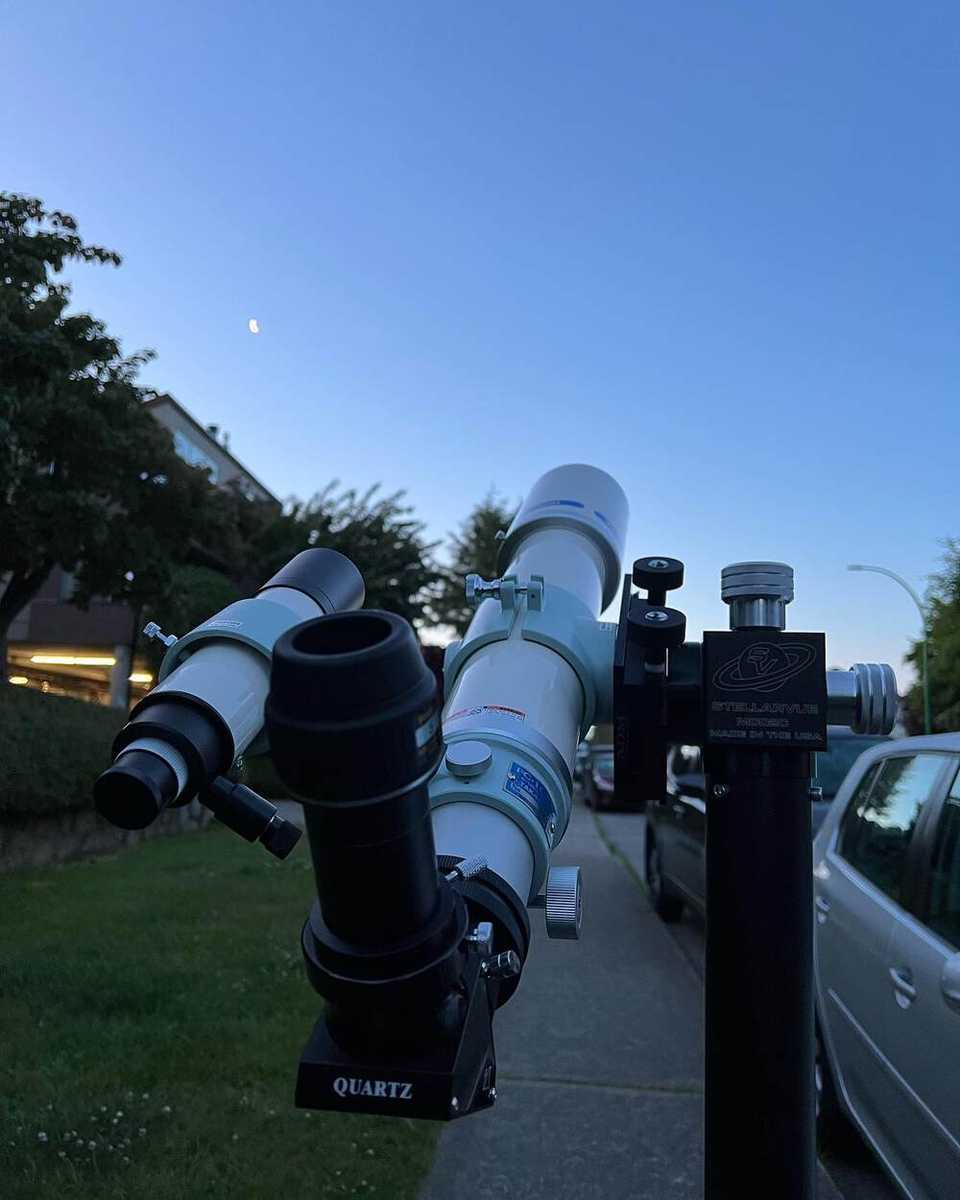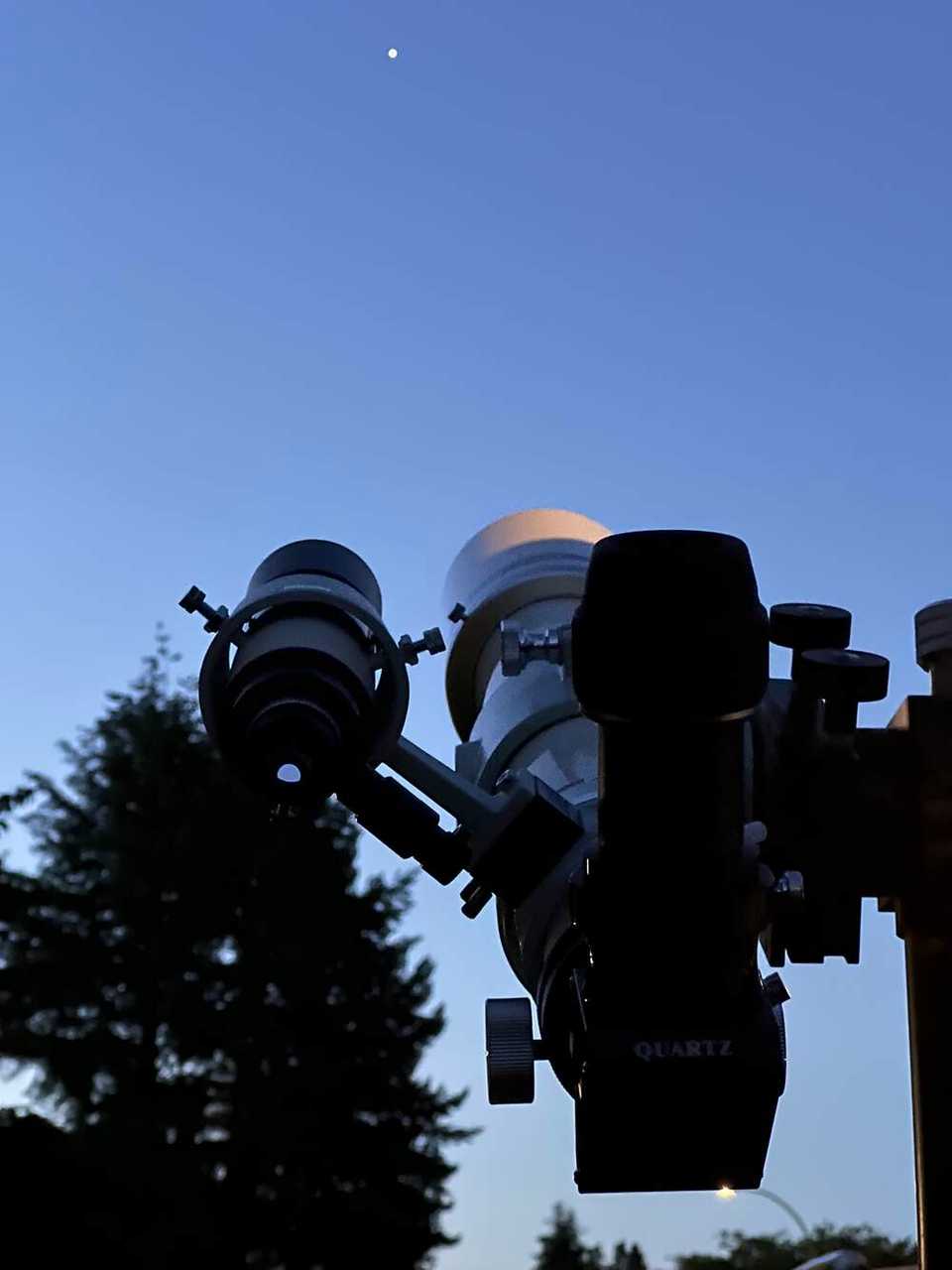3 Planets and the Moon!
Ever since I purchased my new Takahashi refractor in March, I’ve been waiting for the chance to view the planets through it, as Taks have a reputation for being among the very finest planetary and lunar refractors available. Having been dazzled by the lunar views and dazzling many people at outreach events, I had high expectations. I also haven’t seen the planets through a telescope for several years. Today, I finally got to view the planets through the Tak!

Mercury, Venus, Mars, Jupiter, Saturn, and the moon are currently in grand conjunction, lining up in the dawn, and aligned from left to right in the order of proximity to the sun, a rare occurrence indeed.
I woke up in a daze, my hazy dream about planets cut short, while it was clearly still dark out, and immediately checked my watch. 4:10 am! Perfect! I bolted out of bed and peered outside my window. Not seeing any clouds, I went downstairs to the balcony and peered outside, and was greeted by the unmistakable, blazing light of Jupiter to the east and the mellow yellow light of Saturn.
I quickly grabbed my Stellarvue M2C mount and my Pelican case containing my Tak and set up on the sidewalk outside; as I did so, I could see Mars just to the right of the crescent moon. It took me only another minute to have my telescope setup; for quick looks, the ease of having a solid AZ mount cannot be understated.
First target, Jupiter, located in the southeast 30 degrees up. I located it with my 17.3mm Delos eyepiece at 46x, and noted 3 moons to the right side of Jupiter. Using SkySafari, it was Io, Europa, and Callisto, in order of proximity to Jupiter. Ganymede was in Jupiter’s shadow and was not visible.

I swapped to the 5mm Pentax XW eyepiece at 160x and noted that the seeing was very poor, with the rippling and atmospheric dispersion making it challenging to focus the scope. Despite the conditions, the SEB and NEB bands were distinctly visible, as was the Great Red Spot. I also noticed that the white region by the Great Red Spot was very bright, and in moments of steady seeing there were tantalizing clues about the occluded detail.
I then turned to Saturn. The unmistakable rings popped into view, a delightful creamy yellow, but the seeing was such that the Cassini division was not visible. I stared for a while, recalling the many nights in my youth of sketching Saturn in my backyard, and feeling like I was reconnecting with a long-lost friend.

I turned my scope to Mars, which is on its way to opposition with Earth in December, and thus steadily getting larger and brighter with every passing day. Due to the bad seeing, I couldn’t make out any surface detail but look forward to observing it in the fall.
I ended the observation around 5 am with a quick look at the crescent moon. The seeing roiled the fine detail - it looked sort of like it was underwater.

All in all, a nice quick observation of the planets. I’m planning for another session early tomorrow.
